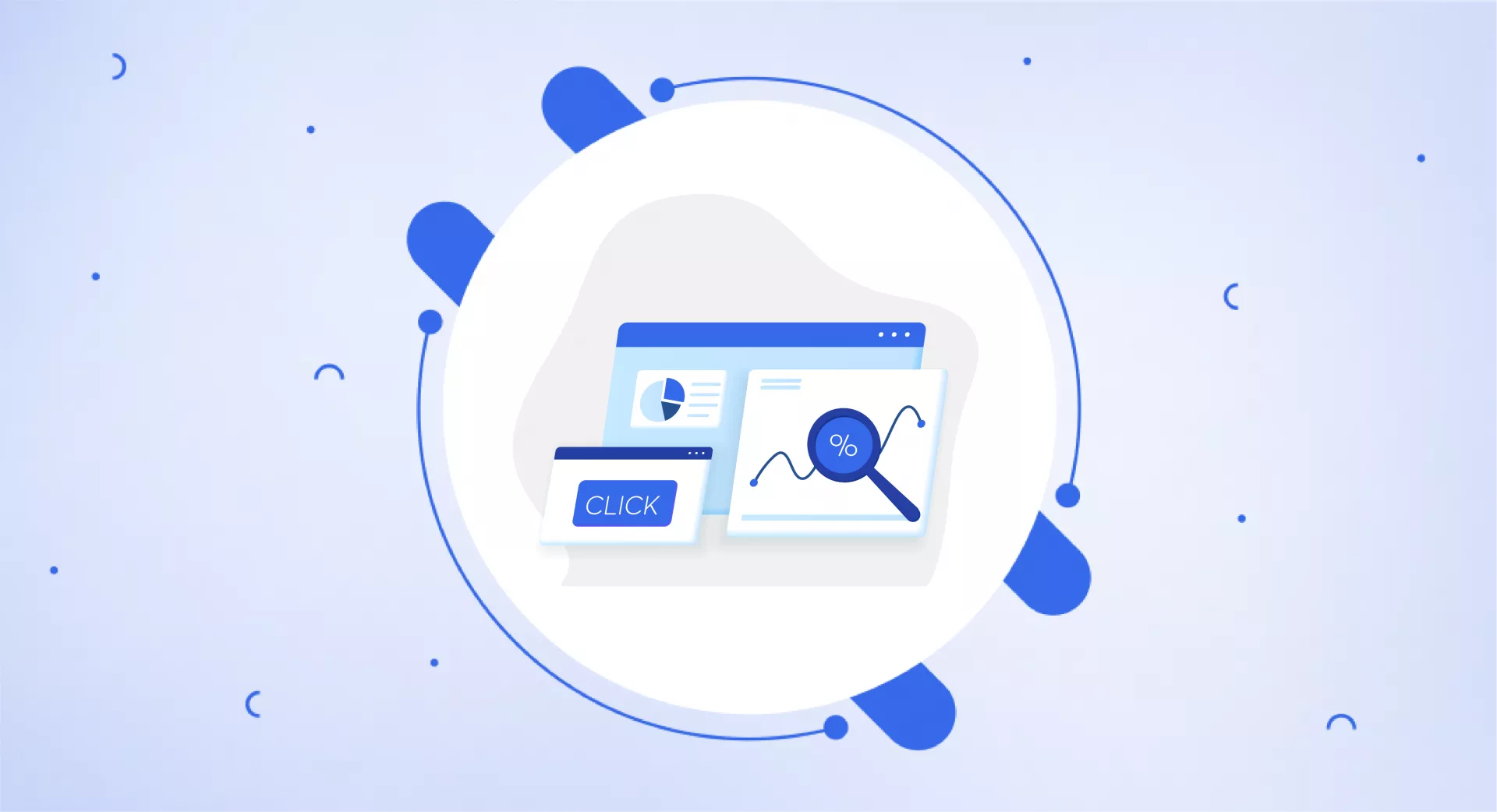What is the Click-through Rate?
Click-through rate (CTR) measures how frequently people click on a link or ad after viewing it.
It’s calculated by dividing the total number of clicks by the number of times the ad or link was displayed.
For example:
An ad appears 100 times
It receives 5 clicks
CTR = 5% (5 clicks / 100 views)
Why is it important?
CTR reflects how successful an ad or link is at encouraging people to engage. A high CTR matters for several reasons:
Drives More Traffic: A higher CTR means more users visit your website.
Boosts ROI: Higher CTRs typically lead to better return on ad spend.
Indicates Relevance: A strong CTR shows that your content resonates with your audience.
Improves Ad Placement: Platforms like Google may reward high CTRs with better ad positions.
Increases Conversions: More clicks increase the chance of turning visitors into customers.
Enhances Engagement: Clicks signal that users find your content valuable.
Raises Brand Awareness: Every click expands your brand’s reach and visibility.
How is it calculated?
CTR is calculated by dividing the total number of clicks by the number of impressions (views), then multiplying by 100 to get a percentage.
CTR = (Clicks / Impressions) × 100%
Example:
If your ad was seen 100 times and got 5 clicks:
CTR = (5 / 100) × 100% = 5%
That means 5 out of every 100 people who saw the ad clicked on it.
Paid vs organic click-through rate
Click-through rate can be measured for both paid ads and organic search results.
Paid CTR: Measures the percentage of clicks on paid ads relative to how often they’re shown.
Organic CTR: Refers to the percentage of clicks on non-paid (organic) search listings.
Key differences:
Paid ads usually achieve higher CTRs because they’re more visible and can be precisely targeted.
Organic CTR depends on factors like content quality, search intent, and SEO optimization.
Both are important metrics for evaluating and optimizing the success of your marketing campaigns.
Is CTR a ranking factor?
CTR is not a direct ranking factor used by search engines like Google.
According to Google's John Mueller, CTR does not directly influence rankings. He has clarified in multiple tweets that CTR alone doesn't determine where a page ranks in search results.
However, CTR can indirectly affect search rankings:
It indicates how useful or relevant your result appears to users.
A high CTR can improve your Quality Score in paid search, which can reduce ad costs and improve ad positions.
So, while not a ranking factor on its own, CTR still plays an important role in performance and visibility.
What is a good CTR?
There’s no universal benchmark for a "good" CTR—it varies by industry, audience, and campaign type.
Generally:
A CTR above your industry average is considered strong.
A good CTR indicates your ads or listings are highly relevant and engaging.
But CTR is just one part of the puzzle. Metrics like conversion rate, CPC (cost per click), and ROI also matter when evaluating marketing effectiveness.
Can high CTR be bad for paid results?
Yes, high CTR isn’t always a good thing—especially in paid campaigns.
Here’s why:
Low conversions: High clicks with few conversions mean wasted spend.
High competition: Costly keywords can drain budget if clicks don’t convert into sales.
Poor targeting: Your ads might attract users outside your target audience.
That’s why it’s critical to monitor conversion rate, cost per acquisition, and return on ad spend along with CTR. Your goal is to attract qualified traffic, not just more clicks.
How to check CTR in the Google Search Console?
Log in with your Google account.
Select your website from the list of properties.
Navigate to the Performance report.
Click the Pages tab to view performance by page.
In this tab, you’ll see CTR, total clicks, impressions, and average position for each page.
Analyze the CTR to understand what content drives engagement. For low CTR pages, consider optimizing the title tag, meta description, or other on-page elements.
How to improve it?
Here are effective strategies to improve your click-through rate:
Craft better headlines: Use clear, engaging headlines that highlight your value.
Add emotional appeal: Use emotional triggers that resonate with your audience’s needs or fears.
Enhance meta descriptions: Write compelling descriptions with benefits and calls-to-action.
Use rich snippets: Add schema markup to show extra details like ratings, prices, and reviews.
Test ad formats: Try different formats—text, display, video—to see what gets the most engagement.
Target the right audience: Refine targeting using demographics, interests, and keywords.
Optimize landing pages: Make sure landing pages match user intent and provide a smooth experience.
Monitor and refine: Regularly track CTR and other metrics like bounce rate and conversion rates to optimize results.
Conclusion
CTR measures how often users click on your content or ad after seeing it.
A high CTR means your content is connecting with your audience. A low CTR signals the need for improvement.
There are many ways to boost CTR—better headlines, emotional language, optimized meta data, and user-focused targeting.
Improving CTR leads to more site traffic, better engagement, and increased conversions.
For long-term success, keep monitoring and optimizing your CTR as part of your digital marketing strategy.


